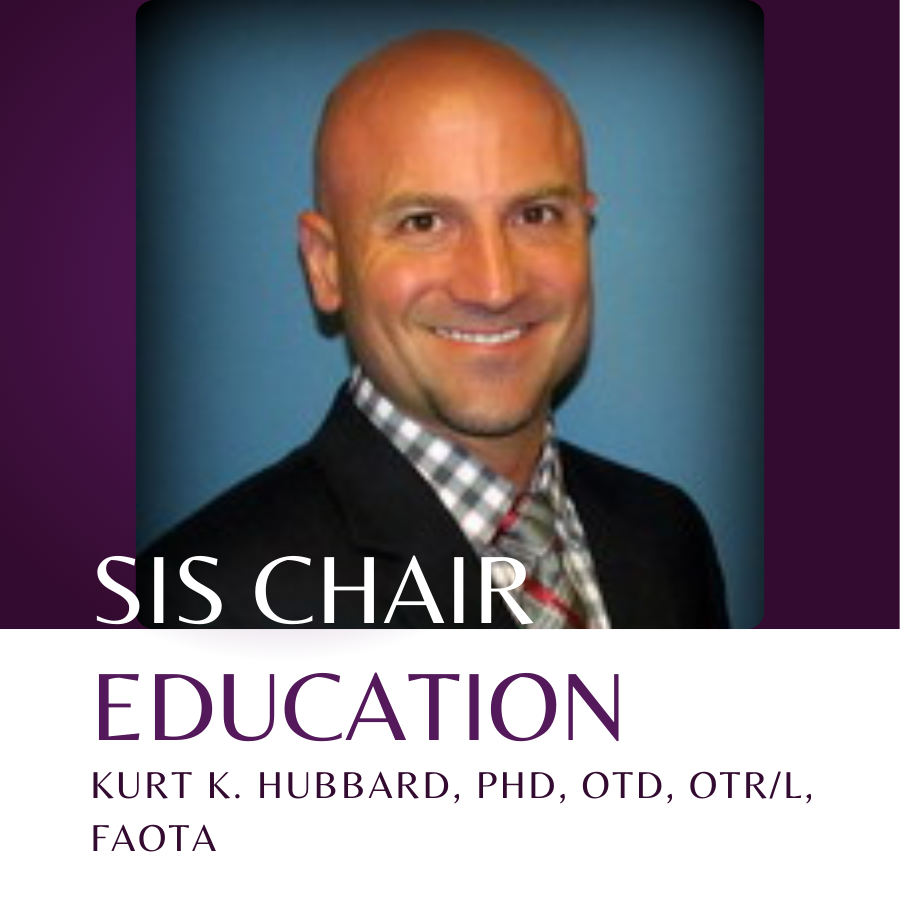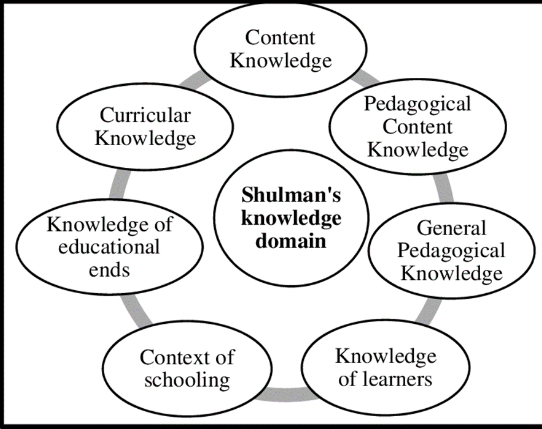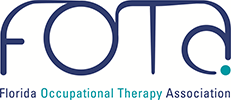A critique of the meshing hypothesis: Using Shulman’s knowledge domain theory to facilitate effective instruction
 A critique of the meshing hypothesis:
A critique of the meshing hypothesis:
Using Shulman’s knowledge domain theory to facilitate effective instruction
Kurt K. Hubbard, PhD, OTD, OTR/L, FAOTA
Instructors aim to use best practices when teaching their learners. However, at times, instructors do not possess the ability to accurately translate appropriate findings into practical and applicable “classroom” practices. These discrepancies have led to the utilization of unfounded beliefs in learning theories. An example of this is the use of the meshing hypothesis. The meshing hypothesis posits that matching instruction to a learner’s preferred learning style will result in optimal learning (Pashler et al., 2008). Experts in education and curriculum development have categorized the meshing hypothesis as a neuromyth (Hughes et al., 2020). A neuromyth is a misconception generated by a misunderstanding, a misreading, or a misquoting of facts scientifically established by research to make a case for its use in education (Organization for Economic Cooperation and Development [OECD], 2002). In 2002, Organization for Economic Cooperation and Development (OECD) published a report, a document now considered a seminal piece on the topic of neuromyths, which called for teaching and learning to be based on science and warned that neuromyths were a problem; this warning was issued over twenty years ago, and still neuromyths are prevalent in the education community (Grospietsch & Mayer, 2019). In the field of education, the trend over the last several years has been to investigate who believes in neuromyths and where these beliefs may originate (Ferrero et al., 2016; Howard-Jones, 2014). Recently researchers have suggested future studies look at instructors in education preparation programs in terms of their neuromyth beliefs and instruction as a potential source for the perpetuation (Van Dijk & Lane, 2020). This should be of prime importance to occupational therapy educators given the amount of information received by learners.
As previously mentioned, the meshing hypothesis is one of the neuromyths perpetuated in the education community. The meshing hypothesis is based on the learning styles theory. The learning styles theory states that all learners have a certain preferred modality which should be used to optimize learning regardless of context (Pashler et al., 2008). Researchers have not found evidence to support that matching instruction based on learner preferences results in optimal learning, which is the premise of the meshing hypothesis (Hughes et al., 2021). Even though researchers have failed to find empirical evidence to support the meshing hypothesis (Pashler et al., 2008), the theory has continued to permeate both society and the education community (Coffield et al., 2004). To illustrate this, a study from as recent as 2020 (Newton & Salvi, 2020) showed that 89.1% of educators reported a belief in the meshing hypothesis. To this end, neuromyths have continued to be perpetuated in the education community despite potential harms (Lithander et al., 2021). Recent studies have explored to what extent a belief in the meshing hypothesis impact instruction that instructors are exposed to in graduate programs. It appears that the education system requires new insights highlighting this gap in knowledge in the literature to provide stakeholders (including OT educators and learners) with information on what instructors believe about the meshing hypothesis.
Researchers have begun to explore reasons for the continued perpetuation of the meshing hypothesis and other neuromyths as well as the feasibility of addressing these issues in graduate programs. A myriad of reasons have been offered to explain the perpetuation of neuromyths among educators including the following: limited access to peer-reviewed scientific journals, technical language in academic journals which limits the understanding of the educator audience, overgeneralization of research findings, personal preferences, conformational bias (Tardif et al., 2015). Allowing the meshing hypothesis to influence instruction may lead to a waste of resources, a mislabeling of learners, negative consequences for learners, and missed opportunities to use evidence-based strategies (Lithander et al., 2021). English (2021) pointed out that designing instruction based on strategies that are not evidence-based adds to the lack of credibility in education and points to the negative perceptions of education generally that lacks solid scientific foundation with adequate links from research to the classroom. Graduate education and instructors are responsible for ensuring that learners are knowledgeable in implementing sound pedagogy. If instructors in graduate programs believe in the meshing hypothesis, then efforts to stop the perpetuation of this neuromyth may be ineffective (Van Dijk & Lane, 2020).
OT educators have a significant role in future instructor preparation; therefore, an understanding of our beliefs are essential. This information may allow us to decide if adjustments are needed in our preparation to disseminate information to learners to ensure that they have scientifically backed information to use when they become faculty. Effective teaching stems from a combination of accurate knowledge about content, sound pedagogical knowledge (PK) and effective instructional practices distinct to a specific discipline, or pedagogical content knowledge (PCK). According to Shulman (1986), an instructor is not only expected to know the subject matter being taught but is also expected to know effective procedures and the rationale behind the instructional decisions made. In addition, Shulman (1987) states that knowledge of learners (KoL) is defined as an understanding of the learner’s learning strategies, abilities, age and development phases, attitudes, motivations, and prior knowledge. Shulman’s knowledge domain theory is divided into seven domains (see figure 1). These seven domains of teacher knowledge are as follows: 1) content knowledge, 2) general pedagogical knowledge, 3) pedagogical content knowledge, 4) theoretical knowledge of educational philosophies/theories, 5) knowledge of the curriculum, 6) knowledge of educational systems, and 7) knowledge of learners (Shulman, 1986). Shulman’s theory aligns with the core of the problem space because it outlines the components of what instructors should know from an evidenced based perspective. Instructors should have knowledge of how learning occurs and knowledge of strategies that are evidence-based and those that are not (Brick et al., 2021).
 Figure 1: Shulman’s Knowledge Domain Theory (1987).
Figure 1: Shulman’s Knowledge Domain Theory (1987).
Understanding how learners learn leads instructors to choose meaningful and effective classroom practices both for lesson planning and classroom management. This evidenced based mentality should facilitate how instructors view learners, which in turn assist them in choosing appropriate pedagogies. Dubinksy et al., (2022) explained that instructors’ KoL includes the physiological knowledge of how the brain works and how learning occurs. These details of how neuroscience knowledge informs instruction and should guides them to choose appropriate pedagogies. This neuroscience knowledge provides insights into how learning takes place in the brain and what physiological, affective, and motivational states contribute to optimal student learning.
The aim of this article was to facilitate a healthy discussion relating to the understanding of how a belief in the meshing hypothesis may affect instruction in our OT programs, keeping in mind that some of our graduates will be future instructors. Experts in the field have categorized the meshing hypothesis as a neuromyth (Hughes et al., 2021; Pashler et al., 2008). The meshing hypothesis neuromyth has continued to be perpetuated in the education community (MacDonald et al., 2017). There are potential harms in allowing the meshing hypothesis to influence instruction including a waste of resources, the mislabeling of learners, negative impacts on students' mindsets, and missed opportunities to use evidence-based strategies (Lithander et al., 2021). The phenomenon of interest is that instructors have reported a belief in the meshing hypothesis (Newton & Miah, 2017). Moving forward, embracing the use of Shulman’s knowledge domain theory by expanding the use of the theory to investigate how one prepares instruction to learners is needed. Shulman’s knowledge domain theory posits that an instructor’s knowledge must go beyond content knowledge and offers 7 categories to outline what an effective instructor should know (Shulman, 1986). These seven categories of teacher knowledge are as follows: 1) content knowledge, 2) general pedagogical knowledge, 3) pedagogical content knowledge, 4) theoretical knowledge of educational philosophies/theories, 5) knowledge of the curriculum, 6) knowledge of educational systems, and 7) knowledge of learners (KoL) (Shulman, 1986).
References
Brick, K., Cooper, J. L., Mason, L., Faeflen, S., Monmia, J., & Dubinsky, J. M. (2021). Tiered neuroscience and mental health professional development in Liberia improves teacher self-efficacy, self-responsibility and motivation. Frontiers in Human Neuroscience, 15, 1-21. doi: 10.3389/fnhum.2021.664730
Coffield, F., Moseley, D., Hall, E., & Ecclestone, K. (2004). Learning styles and pedagogy in post-16 learning: A systematic and critical review (1st ed.). Learning and Skills Research Centre.
Ferrero, M., Garaizar, P., & Vadillo, M. A. (2016). Neuromyths in education: Prevalence among Spanish teachers and an exploration of cross-cultural variation. Frontiers in Human Neuroscience, 10, 1-11. doi: 10.3389/fnhum.2016.00496
Hughes, B., Sullivan, K. A., & Gilmore, L. (2020). Why do teachers believe educational neuromyths?. Trends in Neuroscience and Education, 21. doi:10.1016/j.tine.2020.100145
Grospietsch, F., & Mayer, J. (2019). Pre-service science teachers’ neuroscience literacy: Neuromyths and a professional understanding of learning and memory. Frontiers in Human Neuroscience, 13, 1-16. doi: 10.3389/fnhum.2019.00020
Howard-Jones, P. A. (2014). Neuroscience and education: Myths and messages. Nature Reviews Neuroscience, 15, 817–824. doi: 10.1038/nrn3817
Lithander, M. P. G., Geraci, L., Karaca, M., & Rydberg, J. (2021). Correcting neuromyths: Acomparison of different types of refutations. Journal of Applied Research in Memory and Cognition, 10(4), 577–588. https://doi.org/10.1037/h0101862
Newton, P. M., & Miah, M. (2017). Evidence-based higher education – is the learning styles myth important?. Frontiers in Psychology. 8, 1-9. doi: 10.3389/fpsyg.2017.00444
Newton, P. M., & Salvi, A. (2020). How common is the belief in the learning styles neuromyth, and does it matter? A pragmatic systematic review. Frontiers in Education, 5, 1-14. doi: 10.3389/feduc.2020.602451
Organization for Economic Cooperation and Development [OECD]. (2002). Education at a Glance (2002 ed.). OECD Publishing.
https://doi.org/10.1787/eag-2002-en
Pashler, H., McDaniel, M., Rohrer, D., & Bjork, R. (2008). Learning styles: Concepts and evidence. Psychological Science in Public Interest, 9(3), 105–119. doi: 10.1111/j.1539-6053.2009.01038.x
Shulman, L. S. (1986). Those who understand: Knowledge growth in teaching. Educational Researcher, 15(2), 4-14.
Shulman, L. S. (1987). Knowledge and teaching: Foundations of the new reforms. Harvard Educational Review, 57(1), 1-22.
Tardif, E., Doudin, P., & Meylan, N. (2015). Neuromyths among teachers and student teachers. Mind, Brain, and Education, 9(1), 50–59. https://doi.org/10.1111/mbe.12070
van Dijk, W., & Lane, H. (2020). The brain and the US education system: Perpetuation of neuromyths. Exceptionality, 28(1),16–29. https://doi.org/10.1080/09362835.2018.1480954
